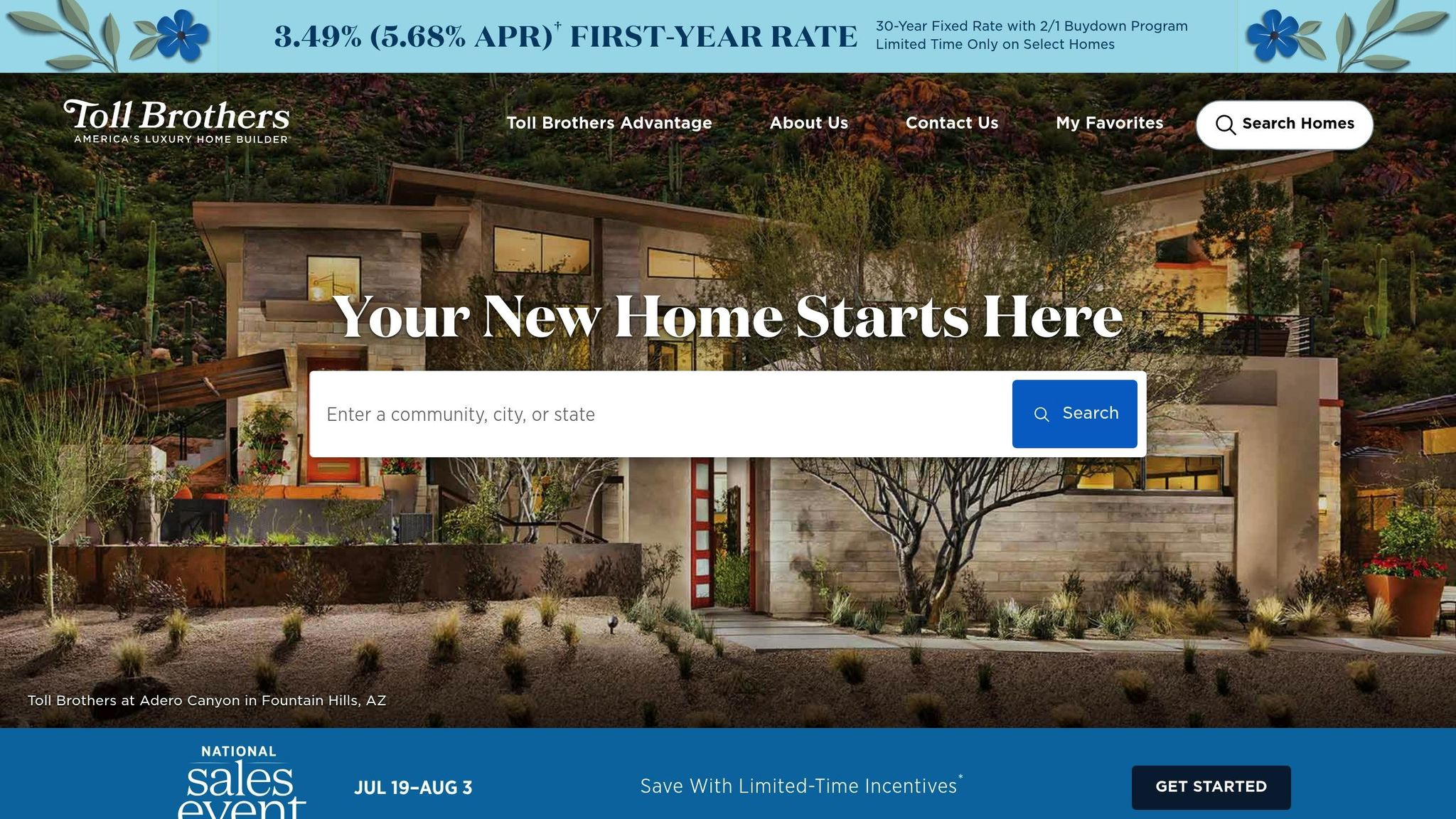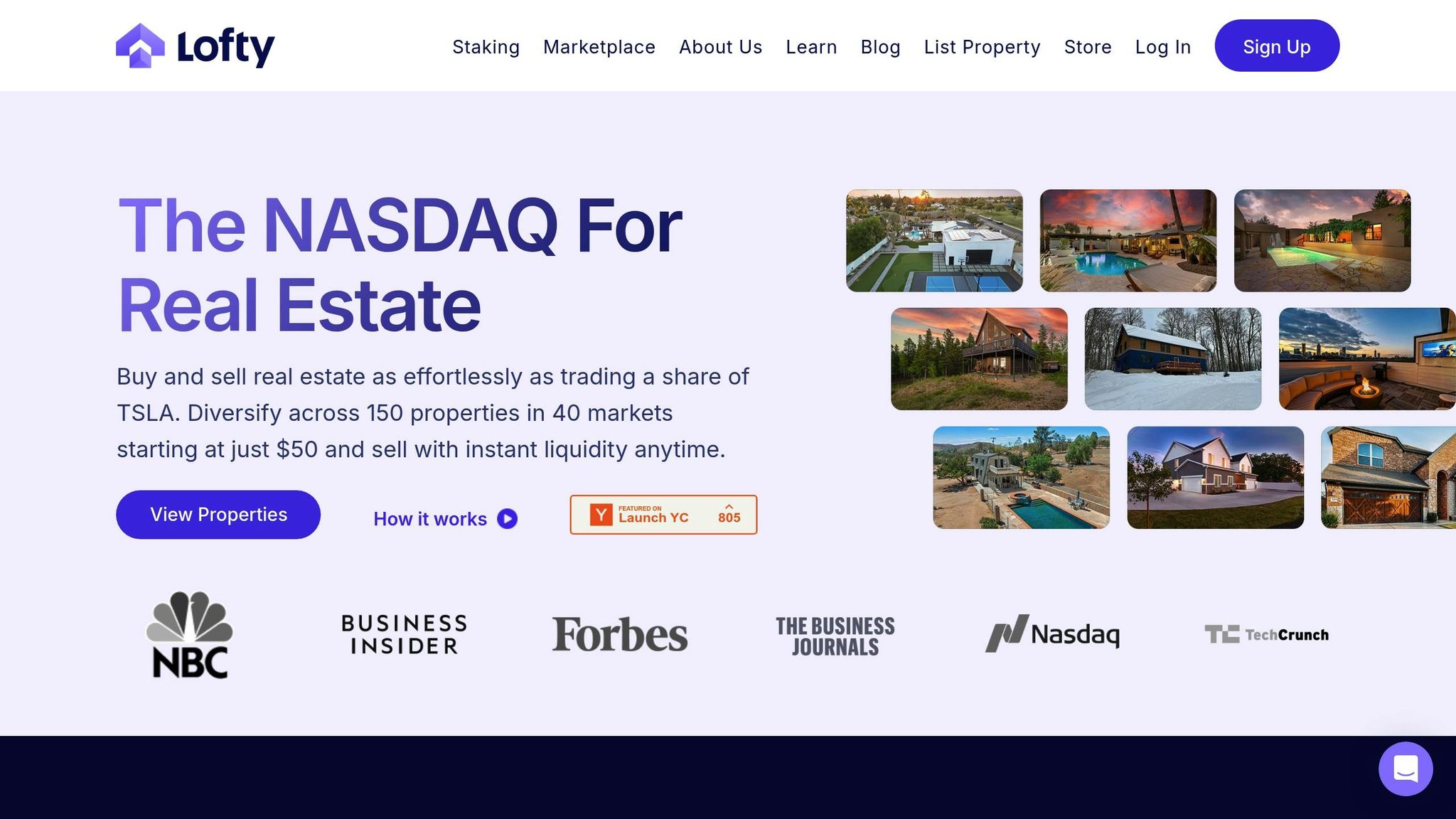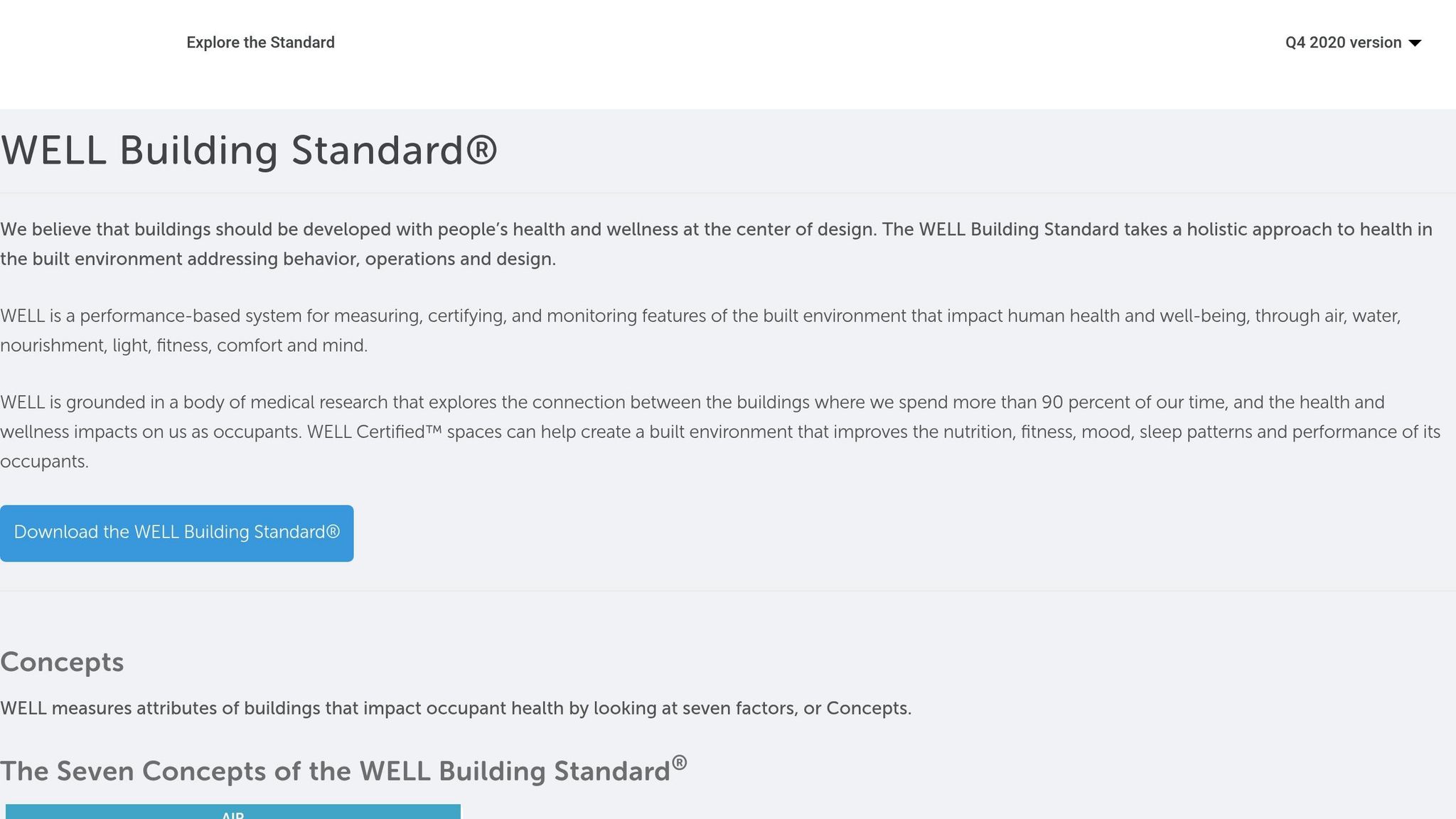How Wellness Infrastructure Boosts Property Value
Jerry Chu
Wellness infrastructure is transforming real estate by integrating health-focused features directly into property design and management. Here's why it matters:
- Market Growth: By 2024, the wellness real estate market hit $438 billion globally, growing at 19.5% annually since 2019. Projections suggest it could reach $1.1 trillion by 2029.
- Higher Property Values: Residential properties with wellness features sell for 10–25% more, while commercial spaces see rental premiums of 4.4–7.7% per square foot.
- Buyer Demand: 78% of homebuyers prioritize wellness in their decisions, driving developers to adopt health-focused designs.
- Examples: Communities like Serenbe in Georgia and WELL-certified offices in Chicago showcase the integration of green spaces, air quality systems, and social amenities.
- Investor Benefits: Wellness properties offer long-term value through higher rents, reduced tenant turnover, and increased ROI.
This trend reflects a shift in buyer preferences and offers lucrative opportunities for investors while improving community well-being.
📍 Toll Brothers Enters Wellness Way - Clermont’s Next Luxury Hotspot! 🏡✨

Research Data: How Wellness Features Increase Property Values
Research highlights that incorporating wellness infrastructure can significantly boost property values in both residential and commercial markets.
Price and Rental Premiums for Wellness Properties
Updated findings from the Global Wellness Institute reveal that wellness-focused residential properties in mid-to-upper market segments enjoy a 10–25% price premium compared to traditional properties. This directly benefits investors by increasing both sales prices and rental incomes.
In commercial real estate, buildings equipped with wellness features show a 4.4–7.7% rental premium per square foot. In cities like Washington, D.C., Boston, and Phoenix, office spaces with wellness amenities can command rent premiums as high as 30% over standard properties.
Certified wellness offices consistently achieve 4.4–7.7% higher rents per square foot, with features like natural light and green spaces further boosting rents by an additional 5–10% in key urban markets.
Case Studies Showing Value Growth
Real-world examples underline the financial benefits of wellness infrastructure. In the hospitality sector, hotels offering extensive wellness amenities reported nearly 43% higher total revenues per available room (TRevPAR) in 2019. These properties also achieved 20% higher average daily rates and 48% more average revenue per room compared to hotels with minimal wellness offerings.
Walkability improvements also play a major role in boosting property values. A study by Pivo and Fisher found that a 10-point increase in walkability (on a scale of 0 to 100) leads to an average 9% rise in the market value of U.S. office buildings. In cities like Houston, Atlanta, and Detroit, multifamily properties with wellness features enjoy higher occupancy rates than the citywide average.
How Studies Measure Impact
Researchers use tools like hedonic pricing models to isolate the impact of wellness infrastructure on property values. By comparing similar properties with and without wellness features, they can pinpoint the added value. Comparative market analyses further support these findings by focusing on properties within the same geographic and market segments.
The Global Wellness Institute backs these conclusions, citing "solid global evidence" that wellness properties command premium pricing. Katherine Johnston and Ophelia Yeung, senior researchers at GWI, emphasize:
"In our view, wellness real estate is the most important sector in the global wellness economy, because it affects the enabling environment, the access, and equity of how we can all live with health and wellbeing."
Data consistently shows that wellness infrastructure outperforms traditional property upgrades in value creation. Depending on the sector, wellness real estate generates revenue premiums ranging from 24% to 146%. These findings not only validate market trends but also highlight the financial appeal for investors.
Investor Benefits: Financial Returns from Wellness Properties
Investing in wellness infrastructure opens the door to multiple revenue streams that go well beyond the initial property premiums, offering both short-term gains and long-term stability.
Higher Property Values and Rental Income
Wellness properties consistently fetch 10–25% higher sale prices for residential units and command 4.4–7.7% higher rental rates per square foot for commercial spaces. These elevated prices and rents directly enhance cash flow. The wellness real estate market, currently valued at $584 billion, is growing at an impressive annual rate of 19.5% from 2019 to 2024, highlighting the sector's strong momentum.
For developers, operators, and investors, the financial appeal of wellness real estate lies in its impact on key metrics like ROI, NOI, and IRR. These metrics underscore the immediate financial benefits while setting the stage for consistent, long-term returns that define this sector.
Long-Term Value Drivers
Wellness properties aren’t just about upfront premiums - they’re built for lasting stability. Features like lower tenant turnover, longer lease terms, and higher tenant satisfaction contribute to reduced vacancy costs and more predictable cash flows. Even during economic downturns, these properties tend to offer resilient income streams.
Additionally, wellness-focused features support higher employee productivity, reduced absenteeism, and improved retention rates. These benefits enhance the overall value of wellness properties, making them attractive for employers and investors alike. While short-term financial gains are appealing, many investors are drawn to the enduring market value that wellness properties consistently deliver over time.
Fractional Investment Opportunities with Lofty

Lofty’s platform provides an accessible way for investors to tap into the wellness real estate market through fractional ownership. By purchasing fractions of rental properties across the U.S. - including those with wellness-oriented features - investors can diversify their portfolios and benefit from the sector’s long-term growth.
Through Lofty, investors enjoy daily rental income and the potential for long-term property value appreciation. With forecasts suggesting the wellness real estate market could reach $1.1 trillion by 2029, fractional ownership offers a practical and scalable way to participate in this growing market.
Wellness real estate can be integrated into a variety of property types and price points, making it a flexible option for fractional investment. Investors can build diverse portfolios that capture the wellness premium across residential, commercial, and mixed-use properties, ensuring a balanced and strategic approach to this expanding sector.
Community Benefits That Drive Property Value Growth
Wellness-focused infrastructure doesn’t just improve individual lives - it uplifts entire neighborhoods. These enhancements create ripple effects, boosting property values across districts and fostering stronger real estate markets.
Health and Well-Being Improvements

Wellness communities are designed to support physical health, mental peace, and social connections, all of which contribute to long-term property value growth. Features like parks, outdoor recreation areas, and public green spaces encourage active lifestyles and help lower rates of chronic diseases.
Spaces like meditation gardens and quiet zones offer residents a chance to recharge mentally, while community halls and event spaces nurture social bonds. Research shows these connections lead to better health outcomes through psychological and behavioral benefits.
On a broader scale, market trends highlight wellness as a key priority for buyers. In fact, 78% of homebuyers now look for properties with wellness-focused features. By integrating services like Wellness-as-a-Service (WAAS), communities can evolve into ecosystems that not only enhance quality of life but also reduce healthcare costs. This approach introduces the concept of Wellness Return on Investment (WROI), which tracks metrics like ROI, NOI, healthcare savings, and resident satisfaction.
Community Resilience and Public Health Savings
Investing in public health delivers massive returns. Studies show that every $1 spent on public health can generate up to $88 in benefits, and a 10% increase in spending can reduce mortality rates by as much as 7%. Resilience hubs, for instance, are a practical way to address both the physical and social needs of neighborhoods.
Take the Stoudamire Wellness Center in Detroit as an example. Operated by the Eastside Community Network, this center tackles challenges like concentrated poverty, limited healthcare access, and weak social networks by offering various community programs. Facilities like these strengthen social ties, which are linked to better self-rated health, lower neighborhood violence, and improved access to resources that promote well-being.
On a larger scale, funding opportunities like California’s $98.6 million Strategic Growth Council Community Resilience Centers Program and the federal Greenhouse Gas Reduction Fund’s $27 billion allocation for clean energy projects are making a difference. Notably, 70% of the benefits from these federal funds are directed toward disadvantaged communities.
These investments highlight the importance of proactively building resilience. Neighborhoods equipped to handle both daily challenges and major disruptions naturally attract higher property values. Buyers are increasingly drawn to areas offering long-term stability and enhanced quality of life through robust public health and social infrastructure. This alignment with market trends further underscores the investment potential of wellness-focused communities.
sbb-itb-a24235f
Conclusion: Investment Potential of Wellness Infrastructure
The numbers speak for themselves: wellness infrastructure is proving to be a lucrative investment. With revenue premiums ranging from 24% to 146% and annual growth of 19.5% projected between 2019 and 2024, the sector offers compelling opportunities for investors.
Residential wellness properties consistently sell for 10–25% more, while commercial spaces command 4.4–7.7% higher rents per square foot. The wellness market itself has seen explosive growth, doubling from $225 billion in 2019 to $548 billion in 2024, with forecasts suggesting it could reach $1.1 trillion by 2029.
Platforms like Lofty are making these opportunities more accessible than ever. By enabling investments as small as $50 in wellness-focused properties, fractional ownership removes traditional barriers like large down payments and deep real estate expertise. Lofty, for instance, has tokenized 148 properties across 11 U.S. states, generating $2 million in rental income for users. Investors benefit from daily rental distributions and a liquid secondary market for property shares, making it easier to build diversified portfolios while contributing to community development.
But the benefits go beyond financial returns. Wellness infrastructure enhances community well-being, which in turn boosts property values. Healthier communities attract more residents and businesses, creating a positive feedback loop that further elevates real estate demand and profitability.
For developers, operators, and investors, the focus is increasingly on economic metrics like ROI, NOI, and IRR to measure the success of wellness projects. It’s worth noting that the 10-year average growth rates in the wellness sector are at least four times higher than those of the broader market, underscoring its potential as a strategic investment.
With health consciousness on the rise, advancements in technology, and the growing appeal of fractional ownership, the wellness sector is set to deliver both immediate rental gains and long-term value appreciation. For investors willing to embrace this dynamic market, the rewards are not just financial - they’re transformative for communities and individuals alike.
FAQs
How does adding wellness infrastructure increase the value of properties?
Wellness Infrastructure and Property Value
Investing in wellness infrastructure is proving to be a smart move for property owners and developers. The numbers speak for themselves: the global wellness real estate market, estimated at around $438 billion in 2024, is expected to grow at a steady annual rate of 14.8% through 2029. This surge highlights the rising demand for spaces designed with health and well-being in mind.
Incorporating features like fitness centers, green spaces, and amenities that promote social connections does more than just enhance the quality of life for tenants. These additions also boost property value and tenant satisfaction. As more people prioritize wellness-focused living, properties offering these benefits attract higher demand, generate stronger rental income, and deliver long-term value growth for investors.
What wellness features can increase a property's value?
Integrating wellness-focused features into properties can greatly boost their attractiveness and market value. Think fitness centers, yoga studios, meditation rooms, and sensory gardens - spaces designed to support both physical and mental health. On top of that, features like air and water purification systems, ample natural light, and the use of eco-conscious building materials create healthier living spaces. These additions don't just enhance daily living; they also make properties more appealing to buyers and renters, contributing to steady value growth over time.
What is wellness real estate, and how can it benefit investors financially?
What Is Wellness Real Estate?
Wellness real estate revolves around properties designed to support physical and mental health. Think green spaces, energy-efficient layouts, and amenities that make it easier to lead a healthier life. Whether it's a residential building with a focus on natural light or a community with walking trails and fitness facilities, these spaces are built with well-being in mind.
From an investment perspective, wellness real estate offers some compelling advantages. Higher property values, increased market demand, and steady long-term returns are just a few reasons why this sector is gaining traction. Buyers and tenants are drawn to properties that prioritize health and sustainability, which makes these investments stand out. Plus, features like wellness infrastructure can help strengthen communities and even cut down on healthcare expenses, boosting their overall appeal and profitability.
Related Blog Posts


